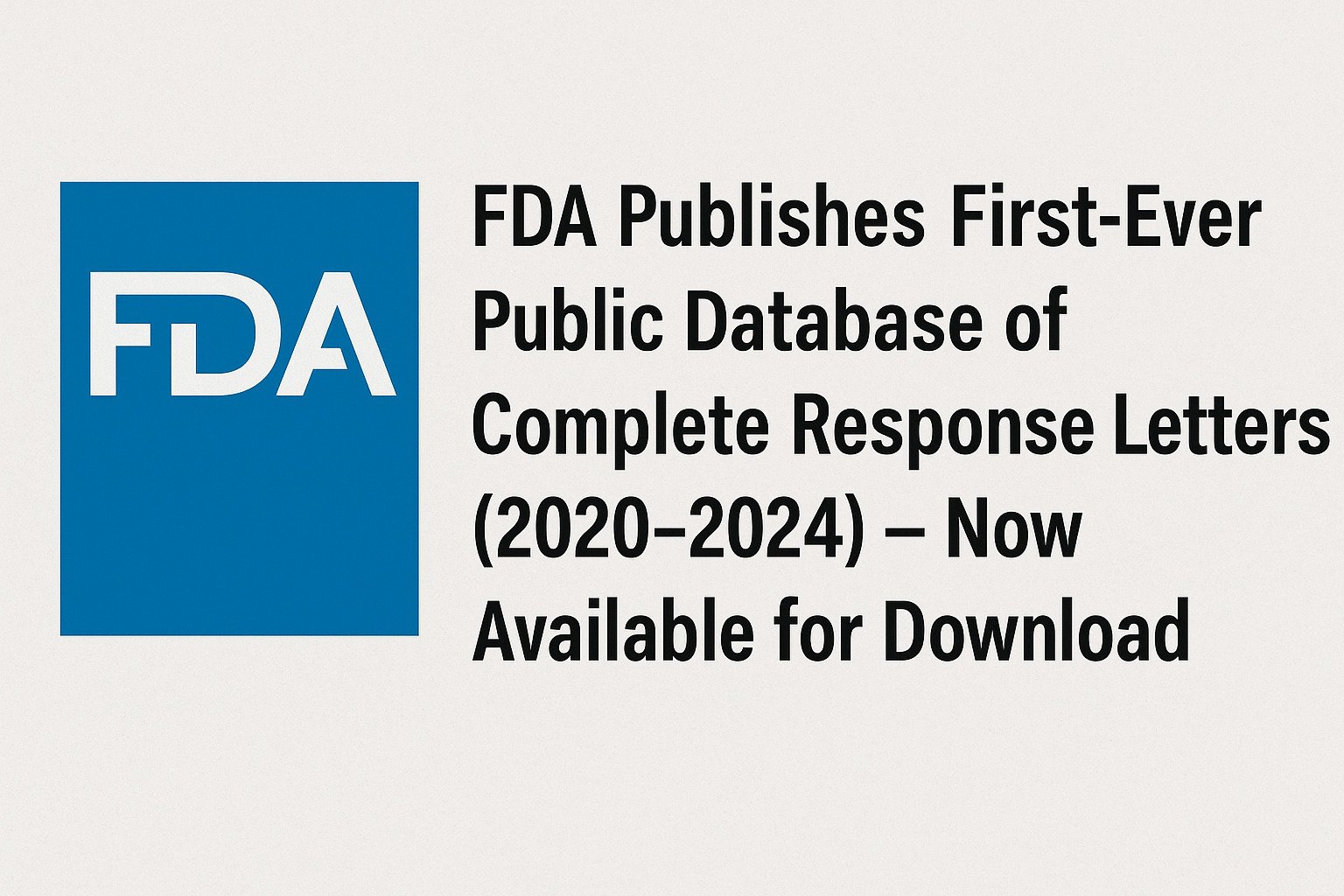FDA Publishes First-Ever Public Database of Complete Response Letters (2020–2024) – Now Available for Download
14 July 2025 | Monday | Regulatory

Download Approved CRLs – 2020 to 2024 (external link)
U.S. Food and Drug Administration (FDA) has, for the first time, made publicly available a centralized database of Complete Response Letters (CRLs) issued between 2020 and 2024. These documents, previously confidential, are now accessible for public scrutiny, offering insights into the FDA’s decision-making process for both New Drug Applications (NDAs) and Biologics License Applications (BLAs) that did not receive approval in their current form.
Download Approved CRLs – 2020 to 2024 (external link)
What Are Complete Response Letters?
A Complete Response Letter is the FDA’s formal communication to a drug sponsor indicating that an application cannot be approved in its current form. Rather than a simple rejection, a CRL provides detailed reasoning, outlining the deficiencies that must be addressed before the application can proceed. These may include:
-
Efficacy and safety concerns
-
Manufacturing and quality control issues
-
Clinical trial design or data inadequacies
-
Labelling or packaging inconsistencies
-
Failure to demonstrate substantial evidence of benefit
CRLs represent a critical checkpoint in the FDA’s commitment to safeguarding public health while encouraging sponsors to rectify shortcomings with clarity.
Why This Matters: Industry and Public Benefits
The release of historical CRLs opens unprecedented opportunities for stakeholders:
-
For drug developers: Access to past CRLs can help companies understand common pitfalls, align trial designs with regulatory expectations, and anticipate areas of scrutiny during submission.
-
For investors: Transparency into why certain products failed approval can inform better risk assessments and pipeline evaluations.
-
For healthcare professionals and patients: This initiative bolsters trust in regulatory processes and drug safety oversight.
“By publishing these letters, we are enhancing the transparency of FDA’s review process and supporting a culture of regulatory learning,” said Dr. Peter Marks, Director of the FDA’s Center for Biologics Evaluation and Research (CBER).
Download Approved CRLs – 2020 to 2024 (external link)
How to Use the CRL Database
Each record contains:
-
Application number
-
Sponsor name
-
Issue date
-
Summary of deficiencies
-
Therapeutic category
Researchers, sponsors, and consultants can filter by year, disease area, and sponsor to trace regulatory reasoning patterns.
The publication of CRLs represents a bold step toward constructive accountability and scientific dialogue. As the pharmaceutical and biotech industries face increasing complexity and scrutiny, this database offers a valuable learning tool to improve future submissions, accelerate innovation, and reduce costly regulatory setbacks.
By making the unseen visible, the FDA reinforces its commitment to evidence-based regulation, public health protection, and industry advancement.
Most Read
- Using NLP-Driven Decision Support in Emergency Health Assistance
- Taiwan Steps Into the Global Spotlight With a New Cancer Therapy
- The Role of Unique Device Identification (UDI) in Tracing Medical Device Safety
- The Importance of a Patient’s Mental Health During Clinical Trials
- Bridging the Vision Gap: Roche’s Ahmed Elhusseiny on Eye Health Priorities in Asia Pacific
- How Merck’s India-Based Navi Mumbai Centre is Reimagining Formulation Science for the Global Generics Market
- Advancing Cell & Gene Therapy in APJ: How Thermo Fisher Enables Breakthrough Innovation
- AstraZeneca’s Vision for Chronic Kidney Disease: Sylvia Varela on Transforming CKD Care in Asia
Bio Jobs
- Ravindra Rao Joins GOBI Technologies as Director of Life Sciences – APAC
- Amgen Announces $900 Million Expansion of Ohio Biomanufacturing Facility, Boosting Investment to Over $1.4 Billion
- Thermo Fisher Scientific Appoints Former CVS Health CEO Karen S. Lynch to Board of Directors
- Merck KGaA Reshapes Leadership for the Future with Key Executive Moves
- Aarian Health Appoints Thomas Keller as Business Director to Drive Innovation and Growth
- Top Management Shakeups of 2024: Redefining Pharma, Biopharma, and Biotech Leadership
News
Editor Picks











